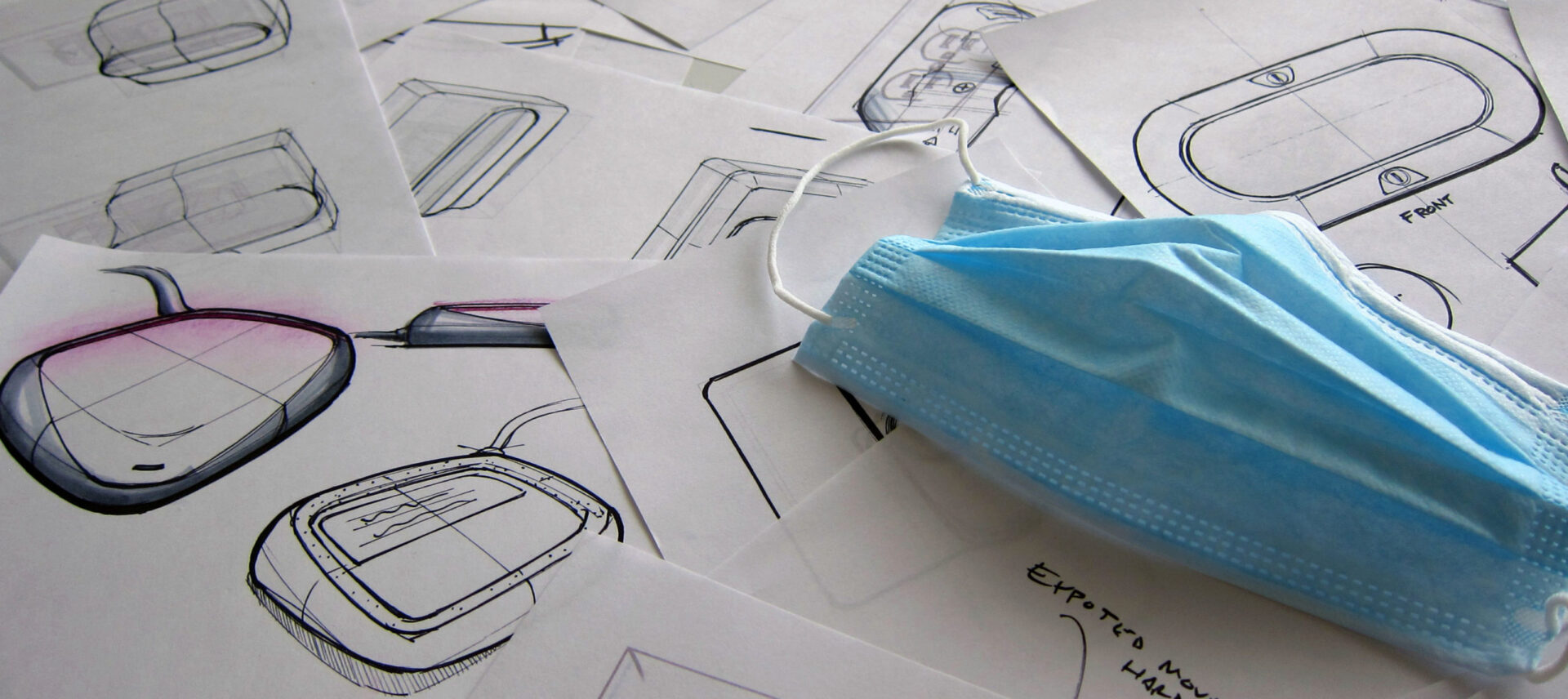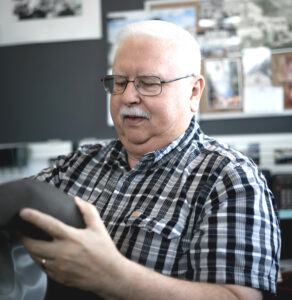
Article
Could COVID-19 Signal a Rebirth for Independent Design Firms?
Is COVID-19 a chance for independent design firms to truly shine? If they provide groundbreaking solutions to today’s biggest challenges like we have, yes.
Are independent design firms dead? One glance at the list of design firm obituaries from the last decade, and you would probably say yes.
From Astro Studio, to Fjord, to Lunar, and more than a dozen others. One by one these firms are getting purchased by large entities with deep pockets: management consultancies, manufacturers, Chinese conglomerates, etc. The once thriving independent design community is looking a little more like a ghost town.
In August, Gadi Amidt of New Deal Design spoke to Mark Wilson of Fast Company about the struggles his firm has encountered in the face of the Coronavirus pandemic and its associated economic downturn. Amidt was honest about considering purchase offers himself and expressed concern for the endurance and viability of independent design firms in this unprecedented environment. Amidt and Wilson’s conversation opened up a dialogue at M3 about the state of our industry and our own firm’s tenacity.
After spending multiple decades in both corporate and independent design, I have seen the work that comes out of both and can say beyond a shadow of a doubt that independent firms are more than just ‘still viable’. I would argue that they are both more valuable and more necessary in today’s environment than they have ever been. Independent design firms can not only survive COVID-19, but can thrive in this new environment.
Here’s why.
Industries Are Overlapping At a Rapid Pace
For decades, digital technology was to thank for the accelerating convergence of industries, now COVID-19 is the one behind the wheel and it’s got a lead foot.
Every industry has been forced to adapt their delivery. This new environment has shifted a large part of the healthcare into the home. Accordingly, healthcare solutions need to integrate into the ‘lifestyle’ product ecosystem. Medical products now have to figure out how to work well in a completely non-medical environment. Same goes for workplace and education solutions.
These products are no longer living in their natural habitat, so their very nature has to change. Corporate design teams are set up to be excellent in one sector, so how do they innovate when markets start to overlap?
Independent design firms are the resident experts on straddling different industries because we’ve been doing it for decades. At a firm like M3, an employee might work on an operating room device, a piece of wearable tech, a desktop phone, and an at-home fitness machine all in one day.
So in the unique situation COVID has created, our people are perfectly pre-equipped with the knowledge needed to bridge those sector gaps.
And while you may argue that a jack of all trades is a master of none, you would do well to remember the critical final phrase of that saying. It actually goes “A jack of all trades is a master of none, but oftentimes better than a master of one.”
Speed is Key in Keeping Up With How Fast Our World Is Changing
Take one of our long time clients. They were basically in a space race to solve a problem everyone in their industry was trying to solve. They had highly intelligent members of their internal staff working on this problem for more than two years, but they had yet to get a feasible proof-of-concept solution. They looked into acquisitions to snap up in an effort to speed things along, but try as they may, they just couldn’t figure it out.
Enter M3. We took a look at everything they had tried to date, and unbeknownst to the client, set up a friendly competition among our internal staff. The result? Not one, but three viable concept directions, two crude proof-of-concept mock-ups that proved viability, and about a dozen other concepts that were less successful. How long did it take? Two weeks. The client flew in to try one of the mock-ups we made, and I’ll never forget the look on his face. He tried it, looked up at us, and said, “Damn you.” We got him further in two weeks then he had been able to get himself in two years. And this is a smart guy, on a smart team with all the resources in the world.
These days, you can’t take two years to solve a problem. Hell, even two weeks feels like a lifetime. If you’re looking to turn today’s lemon-like circumstances into proverbial lemonade, then maybe you should ask for some help in creating the recipe.
Next-Level Creative Solutions Are Not Optional
Let’s face it, corporate structures have a longstanding tradition of stifling creativity amongst their workers.
I know it’s harsh, but I say that with such confidence because I’ve been spent years on both the corporate and independent sides. I’ve seen firsthand the work that comes out of corporate organizations versus the work that comes out of independent design firms. There’s a reason corporate orgs continue to hire the independent firms, and it’s not just for the hell of it.
As we move into the never-before-seen landscape COVID has created, consumer behaviors are shifting in a completely new way. On the shortlist of changes: e-commerce is king, brand loyalty is down and touchless solutions are no longer optional. And yes, some of these new changes may prove to be short term adaptations, but let’s be frank–there is no ‘going back to normal’.
Groundbreaking creativity is no longer a plus, it’s a must.
At a glance, the road ahead for product developers seems rocky. We’re in the middle of the worst economic downturn since the Great Depression and the greatest public health crisis this century. When disposable income drops and fear for the future rises, what do product people do? How do you convince someone that your product is important in the face of all this? They’ve got bigger issues.
But it’s in these bigger issues that product developers can find the map to success. There are new and complex problems emerging everyday that need corresponding product solutions. These days, a design firm might not be able to make money by reinventing the smart phone or the spatula but they will make money by reinventing the way diseases are tested for or the way children are taught from home or the way people shop for groceries.
Our current landscape bolster’s the viability of design firms because it gives them the perfect opportunity to do what they do best–solve a problem for their user. Lord knows we’ve got enough problems to go around.
Cost-Consciousness is More Critical Than Ever
As we forge through the COVID-induced economic downturn, many companies are having to make difficult decisions about where they’re trimming fat. In a time of economic uncertainty, it can feel reckless to allocate your already slim budget to having someone else do the work for you.
And trust me, we get it. There’s a certain level of sticker shock that goes along with hiring an outside firm. While estimates can seem high on paper, what’s important to consider is the overall value the partnership will provide and the overall money you could save. It’s about the long-term economics, not the short-term.
Our cost-saving power is evident in the example of our client who spent two years working on a solution that never came to be. Two weeks with our team and there were several options on the table. While the upfront cost of hiring of us might have seemed high, contextualize that with how many man-hours were paid for over that two year period with no output to show for it. Suddenly our price isn’t looking so high after all.
At the end of the day, what you need is creativity and a viable product, so how do you want to pay for it? By cutting a check to an independent design firm with with a stacked roster of A+ players (and let’s face it, anything less than an A+ player doesn’t survive in our type of business)? Or by adding headcount to a permanent, salaried in-house team?
Part of the beauty of relying on an independent firm is that we offer the ability to flex in and out of work. This is essentially what provides benefit to both us and our clients. You’re able to approach us when you need help, and when you don’t, we focus our attention on other projects, allowing us to sharpen our skillset and broaden our horizons. Then we’re even better prepared the next time you come knocking.
We Will Continue To Solve Problems, Same as Usual
Is COVID-19 the official kiss of death for the already declining independent design industry? I think not.
Ironically enough, while we’re still mourning the loss of numerous independent design firms, the perfect environment for these firms has been created.
I have the utmost faith COVID won’t kill off firms like ours altogether. If anything we can flourish more now than ever before. After all, design firms were created to solve problems. And if one thing is certain in these uncertain times, it’s that there is no lack of problems to be solved.





